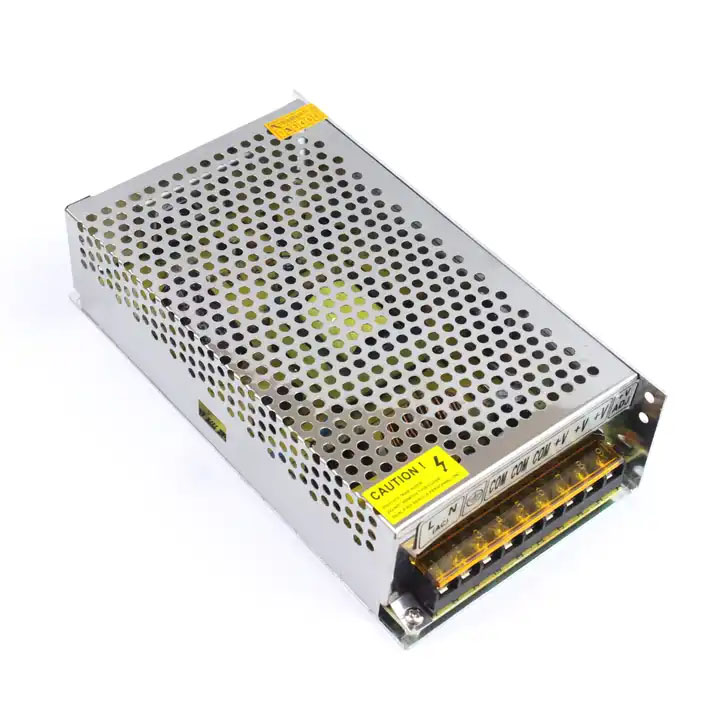Understanding Switching Power Supply: A Guide for Efficient Power Management
2025-04-29
In today's tech-driven world, efficient power conversion is crucial for a wide range of electronic devices. Whether you're powering your home appliances, electronic gadgets, or industrial equipment, switching power supplies (SMPS) play a vital role in ensuring reliable and energy-efficient performance.

In this article, we’ll take a closer look at what a switching power supply is, how it works, its advantages, and where it’s commonly used.
What is a Switching Power Supply?
A switching power supply (SMPS) is a type of power supply unit that uses electronic switches (such as transistors) to convert electrical power efficiently. Unlike linear power supplies, which use resistors to drop the voltage, switching power supplies operate by rapidly switching on and off to regulate the output voltage and current.
By doing so, SMPSs minimize the amount of wasted energy, making them far more efficient than traditional power supplies. This is especially important in modern electronics, where efficiency, compactness, and heat management are key factors.
How Does a Switching Power Supply Work?
The working principle behind a switching power supply can be broken down into a few key stages:
1. Input Power Conversion: The input power, typically alternating current (AC), is converted into direct current (DC) by a rectifier circuit.
2. High-Frequency Switching: The DC voltage is then applied to a high-frequency switching transistor (like a MOSFET). This transistor switches on and off at a high frequency (usually between 20kHz and 1MHz), which helps reduce energy losses.
3. Energy Storage: The high-frequency switched current is sent through an inductor and capacitor, which smooth out the ripple and store energy temporarily.
4. Voltage Regulation: The output voltage is carefully regulated by adjusting the switching duty cycle. A feedback loop ensures the output remains stable despite fluctuations in load or input voltage.
5. Output: Finally, the processed DC voltage is provided as the output to power the device.
Types of Switching Power Supplies
There are several types of switching power supplies, each suited for different applications:
1. Buck Converter (Step-Down):
A buck converter reduces the input voltage to a lower, more manageable output voltage. It’s ideal for applications that require lower voltage than the input supply. For example, if you’re powering a 5V system from a 12V source, a buck converter is a good choice.
2. Boost Converter (Step-Up):
A boost converter increases the input voltage to a higher output voltage. It’s used when you need more voltage than what is provided. For instance, if you need a 12V output from a 5V input, a boost converter will do the job.
3. Buck-Boost Converter:
A buck-boost converter can both step up and step down the voltage. It’s perfect for situations where the input voltage may fluctuate above or below the desired output. This type of converter is often used in automotive applications or solar power systems where the input voltage can vary.
4. Flyback Converter:
The flyback converter is often used in isolated power supplies. It uses a transformer to provide electrical isolation between the input and output, which is critical in many industrial and medical devices.
5. Forward Converter:
A forward converter is similar to the flyback converter but operates differently to achieve higher efficiency, especially in high-power applications. It’s commonly used in power supplies for larger devices, like servers and industrial equipment.
Advantages of Switching Power Supplies
Switching power supplies offer several distinct advantages over traditional linear power supplies:
1. Higher Efficiency
The most significant advantage of switching power supplies is their high efficiency. Due to the high-frequency switching and minimal energy loss, they can convert power with an efficiency rate of up to 90% or more. This efficiency reduces energy waste, lowers electricity bills, and minimizes heat production, which is crucial for sensitive electronics.
2. Compact Size
Switching power supplies are much more compact compared to their linear counterparts. Because they use high-frequency switching, they don’t require large transformers or heat sinks, making them ideal for applications where space is limited.
3. Wide Input Voltage Range
SMPSs can accept a wide range of input voltages and still provide a stable output. This makes them versatile and suitable for various power sources, from battery-operated devices to mains electricity.
4. Less Heat Generation
Since SMPSs are more efficient, they produce significantly less heat than traditional linear power supplies. This reduces the need for complex cooling systems and makes SMPSs more reliable in long-term use.
5. Cost-Effective
Although the initial cost of a switching power supply may be slightly higher than a linear one, the energy savings, smaller size, and reduced need for heat management make SMPSs a more cost-effective option in the long run.
Common Applications of Switching Power Supplies
Switching power supplies are used in a wide array of industries and devices. Here are some common applications:
1. Consumer Electronics
Switching power supplies are used extensively in consumer electronics like laptops, smartphones, televisions, and gaming consoles. Their high efficiency and compact size are ideal for these devices, which require reliable, stable power in a small form factor.
2. Industrial Equipment
Many industrial machines and automation systems use SMPS to provide stable power to their control circuits, sensors, and actuators. These systems often need power supplies that can handle a wide range of input voltages and supply clean, regulated power.
3. LED Lighting
Switching power supplies are essential for powering LED lights and lighting systems. LED drivers, which regulate the voltage and current to LEDs, rely on SMPS to ensure consistent brightness and prevent overheating.
4. Telecommunications
In the telecommunications industry, switching power supplies are used in base stations, routers, and communication equipment to provide stable power over a long lifespan.
5. Medical Devices
Medical equipment requires highly reliable and precise power, and SMPS is commonly used in medical devices such as diagnostic machines, imaging equipment, and portable medical systems, where compact size and efficiency are critical.
Conclusion
Switching power supplies (SMPS) offer a combination of high efficiency, compact size, and versatility that make them the go-to solution for powering a wide range of electronic devices. From consumer electronics to industrial machinery and medical devices, the applications are endless.
Their ability to handle different input voltages, regulate output efficiently, and minimize heat generation makes them indispensable in modern electronics. Whether you're designing a new device or replacing an old power supply, consider switching to an SMPS for better performance, reliability, and energy savings.


